2023 Update
Eat that Frog…so I reviewed this book back in November 10 2010..that’s 13 years ago….wow! But an old client spoke to me about it just before Christmas and I thought I’d take another look. After all this is the year of non procrastination, full commitment and going all in.
However, there’s a new edition with two new chapters.
I use a Pomodoro approach so thought it was interesting that he added in how technology can remind you of what is most important and protect yourself from what is least important.
The second offers advice for maintaining focus in our era of constant distractions, electronic and otherwise. I’m a big fan of Cal Newport and all his books (So Good they Can’t Ignore you, Deep Work, Digital Minimalism)
It’s on order so it will be interesting to see what these two new chapters are about. In the meantime, I’ve just reread this review and got nuggets…esp the bit about everyone procrastinates. It gives us permission but at the time, tells us to procrastinate on the trivial few not the vital few!
I’ll let you pick out your favourite tip.
***
10 November 2010.
Alan Tracey of Knowledge Business Systems gave me the gift of time management, through the guise of Eat that Frog by Brian Tracy.
It is one of those rare finds – small enough to carry around in your bag or pocket and large enough to contain useful, applicable information.
There is an old saying that if the first thing you do in the morning is to
eat a live frog, you’ll have the satisfaction of knowing it’s probably the worst thing you’ll do all day. Tracy transfers this saying into the business world and believes that we, mere mortals, should do our most challenging tasks first rather than work on the smaller tasks.
There are so many good points in this book that I would quite literally be here all day! I enjoyed it so much that I thought I’d share my top five learnings from it.
Five Things to Do to Stop Procrastinating
1. Everyone Procrastinates
As I type this, I look at how long my fingers are. Very long indeed. What I learned is that most people procrastinate. It’s just that most people procrastinate on the top 10-20% of items that are the most valuable and important, what Tracy calls “the vital few”. They don’t procrastinate on the least important items – the “trivial many” – which contribute very little to results. They work away on the trivial few, busying themselves with the mundane tasks that don’t give results.
Tracy suggests that we should ask ourselves with every task – “Is this task in the top 20% of my activities or bottom 80%? This way it will help with working on the highest value tasks and then finish with the lower value tasks.
2. Focus & Concentration
Overcoming procrastination and eating your ugliest frog is a habit that can be taught, once you have focus and concentration. He believes that there are three qualities to develop the habits of focus and concentration, which are all learnable. They are Decision, Discipline, Determination.
- Make the decision to develop the habit of task completion.
- Discipline yourself to practice the principles you learn over and over until you master them.
- Back everything you do with determination until the habit is locked in and becomes a permanent part of your personality.
3. Master Lists
Only three percent of adults have clear, written goals. He says that these people accomplish five and ten times as much as people of equal or better education and ability but who, for whatever reason, have never taken the time to write out exactly what it is they want.
In order to think on paper, he suggests that we plan every day in advance. He goes one step further to suggest that we create a master list of tasks, a monthly list, a weekly list and a daily list.
Using this system, we can divide up the tasks through-out the month and get more of the important things done.
Planning the night before clears the way to hit the ground running the next day.
4. ABCDE Method
This takes another look at the time quadrant. It breaks down tasks into:
A – must do
B – should do
C – nice to do
D – delegate to
E – eliminate
If you have several A, B, C, tasks, then prioritise them into 1, 2, 3 etc.
As you get more tasks to do, add them to the bottom of the list and when you are finished the task that you are working on, then prioritise or re-prioritise your list.
5. Put the Pressure on Yourself
If you feel like taking a break or calling a friend, he believes that you should talk to yourself. Don’t give yourself treats until you have finished a task. That’s a habit to focus and work on. Similarly, he says that you should tell yourself to ‘Get back to work’, ‘Get back to work‘…when you feel like procrastinating.
Only 2% can work without supervision. They are leaders and they are whom we are supposed to be. Putting the pressure on ourselves will give us great results.
Summary
I found this book useful for the little questions to ask myself but also for it’s amazing clarity. It is common sense but sometimes you need a reminder. Time is going to pass anyway. The question to ask ourselves is how we’ll use it and where are we going to end up at the end of the weeks and months that pass. Only we can control those answers.
If you’d like to buy this book, then head on over to Amazon:
As an Amazon Associate I earn from qualifying purchases.








